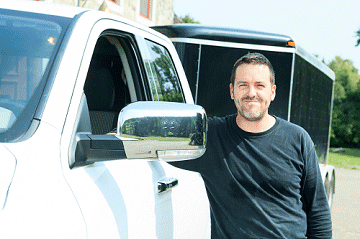Loading...
Loading...
- Home
- Loss Control
- Loss Control Insights
- Steer Clear of Backing Accidents
Did you know that nearly one in four vehicle accidents involves backing? That’s pretty high, especially if you consider how little distance is covered each day by backing vehicles as compared to those moving forward. Help prevent pricey backing accidents by passing along these tips to your drivers.
Just Say No to Backing
The best way to avoid backing accidents is to avoid backing at all. Whenever possible, plan ahead to avoid having to back your vehicle later. Look for parking spots that allow you to pull through the spot so you can drive forward to leave.Break Away from the Crowd
At many public locations, you’ll find the majority of pedestrians and other vehicles near the building’s entrances and exits. This means there are a lot of moving hazards for you to keep track of when trying to back out of your parking spot. You’ll reduce your chances of a backing accident by parking in an area where fewer vehicles and pedestrians are located, so park further back in the lot and consider the extra steps on your Fitbit a bonus.Know Your Vehicle’s Blind Spots
Mirrors will never be able to show you everything that’s going on around your vehicle, and even rearview cameras have their limitations. In a medium-sized truck, the blind spots may extend more than 15 feet in front of and behind the vehicle. Make sure you know what areas around your vehicle are hidden in blind spots, and figure out what you need to do to get the whole picture. If you drive a vehicle that’s especially tall, make sure you’re always on the lookout for possible clearance issues like low-hanging wires, overhangs and entryways.Do a Lap Before You Leave
Before you leave a parking spot, even if you’ve only been there a few minutes, do a full walk-around of the vehicle to see if any new hazards have popped up since you parked. Check for children in the area, potholes and other things that can be hard to spot using mirrors alone. Having trouble making the walk-around a habit? Place a safety cone behind your vehicle every time you park. This forces you to retrieve it before leaving, creating a natural opportunity to take a lap around looking for hazards. Once you complete the walk-around, start your vehicle and leave right away before the conditions around you change.Sound the Alarm
It’s a good idea to communicate your intention to back up before you put the vehicle in motion. Some organizations choose to install backup alarms that are activated when the vehicle is put in reverse. You can also tap the horn a few times to let anyone nearby know that the vehicle is about to move.Snap that Selfie Later
This should be obvious, but when you’re driving a vehicle in reverse make sure you’re devoting 100% of your attention to the task. That means you aren’t playing with your phone, adjusting the radio or checking yourself out in the mirror.Same Spot, Different Day
Every parking situation is different, even if you visit the same location multiple times a week. Never assume that things will be the same as the last time you visited. Instead, stay alert and keep an eye out for changes.Find a Buddy to Help
If you’ve got a passenger in the vehicle, put them to work as a spotter while you’re backing. A spotter is especially useful in areas with fixed obstructions like retaining walls or low-hanging canopies. Make sure the spotter stays at least eight feet away from the backing vehicle, and use agreed-upon hand signals instead of verbal cues.Practice Makes Perfect
If you’re having trouble mastering the art of collision-free parking, you might need some practice. Find an empty lot and set up cones to represent other vehicles and objects you need to avoid, then keep at it until you feel comfortable backing.Find More Online
For more information, check out these resources.Get in touch
Need help? We’re here for you! Whether you have questions or need personalized assistance, your local office is ready to support you.
Loss Control Insights
Stay informed with the latest news and receive actionable safety tips, all carefully curated by our team of experts.
